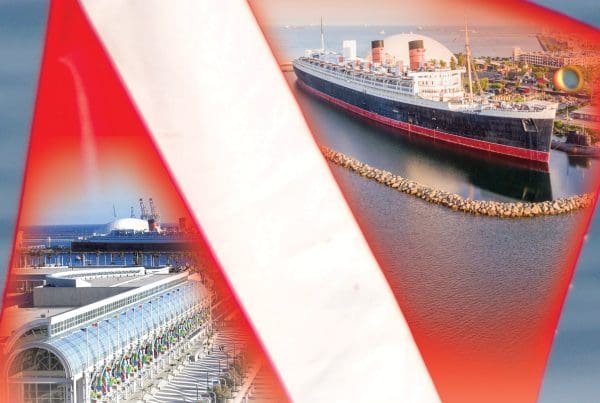A young white shark, returned to the wild by the Monterey Bay Aquarium, has traveled past the southern tip of Baja California and is heading toward waters off the Mexican mainland, according to data from an electronic tracking tag the shark is carrying.
The tag is delivering near real-time information on his position – information the public can track online, where his movements are updated and mapped almost on a daily basis.
The male shark, released on February 5 after 162 days at the aquarium, is the first shark released from the Outer Bay exhibit to carry two different tracking tags. All three white sharks exhibited at the aquarium since 2004 have survived and thrived following their release.
As with the two previous sharks, he carries one tag that logs where he travels, including the water temperatures and depths he favors. That tag is programmed to pop free on July 2, when it will transmit its stored data via Argos satellite to researchers at the aquarium and at Stanford University’s Hopkins Marine Station in Pacific Grove. Stanford is the aquarium’s lead partner in the white shark research project.
The second tag – deployed for the first time on a shark released from the aquarium – is a Smart Position-Only Tag (SPOT) that transmits the shark’s location via satellite when its dorsal fin breaks the surface of the water. The tag reports in every two days.
An updated map of its movements is posted on the Tagging of Pacific Predators (TOPP) website, www.topp.org, by following the Juvenile White Shark link on the Live Data page, http://las.pfeg.noaa.gov/TOPP_recent/index.html.
TOPP is one of 17 projects of the Census of Marine Life, an ambitious 10-year, 80-nation endeavor to assess and explain the diversity and abundance of life in the oceans. Several dozen TOPP researchers from eight countries are using satellite tags to track 22 different species of top predators that roam the Pacific Ocean – including white sharks.
The SPOT readings confirm that the white shark made it safely past fishing grounds on the Pacific coast of California and the Baja Peninsula, rounded Cabo San Lucas and is heading toward the Mexican mainland just 44 days after his return to the wild.
A pop-up tag placed on a female white shark released in 2005 tracked her from Monterey Bay to waters north of Santa Barbara during her first 30 days back in the wild. The second shark reached Cabo San Lucas 90 days after his release in 2007.
For the third shark, the tag is programmed to separate 148 days after release and the shark was fitted with a SPOT tag as well. Both decisions were based on a desire to learn more about where young white sharks travel, said Randy Hamilton, vice president of husbandry for the aquarium.
“It’s remarkable,” Hamilton said. “The shark made it to Cabo in one-third the time it took the second animal to get there. To travel that far, that fast, was totally unexpected. It’s another reminder of just how little we know about what these animals do in the wild.”
The pop-up tag will collect data for another three months, and the SPOT will keep reporting for several months beyond that, he said.










